
A Fairground Boxing Heritage
by
Martin Moore Steenson
I never met my great-grandfather, but as a child I heard many stories of him & his family. As the proprietor of a travelling boxing show he held a great fascination for a small boy.
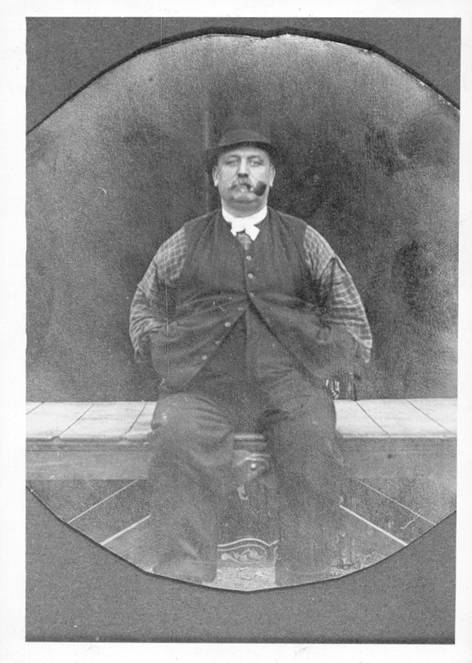 Bill Moore
Bill Moore
Bill Moore was the eldest of a family in Wells, who at various times were pub tenants, fishmongers & fruiterers. As a young man he became interested in horses, and started buying & selling them at fairs. The fairs life must have appealed to him, for at some time he bought a boxing booth. Perhaps he was inspired by the prowess of his son Albert (born September 27th, 1889), who had started as a miniature boxer at six years old. Presumably Bill Moore was the master of ceremonies, and at 22 stone and over six feet tall, must have been an impressive sight.
The booth was established enough by 1903 to be featured in George A. Fothergill’s Sketch-Book, published that year in Darlington and consisting of stories and sketches from the surrounding area. In a section on ‘The Hirings’, the author relates the custom of hirings taking place twice a year (May and November) in Darlington, at which people would gather in the street and wait to be approached by farmers or other prospective employers. With this meeting of so many people, it is only natural that other attractions appeared, including many fairground stalls. Fothergill relates that for men the main attraction was Moore’s boxing booth, where spectators could see the resident boxers take on all-comers, irrespective of weight. The author comments that these resident boxers ‘have a hard and rough time of it, especially in the coal districts among the rough and plucky miners.’
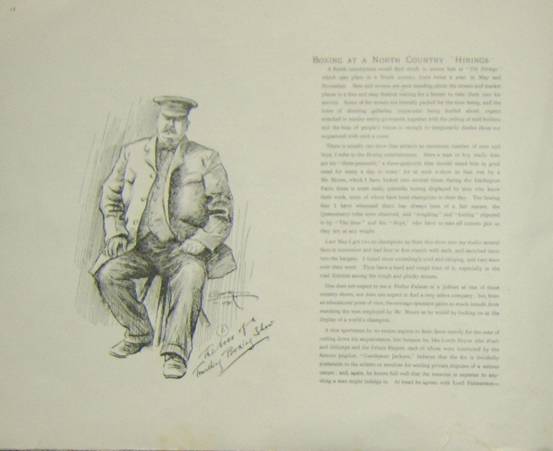
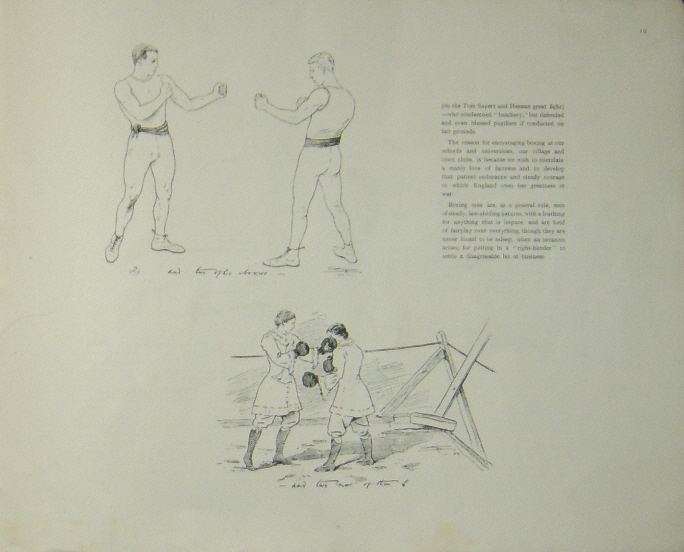
Although young Albert was the star, all the family had to help, with my grandmother Alice acting as second, and my great-aunt Annie and her aunt Sarann donning the gloves and fighting each other. This may seem strange at first, but Annie, the eldest of Bill Moore’s children, was actually 3 years older than her aunt!
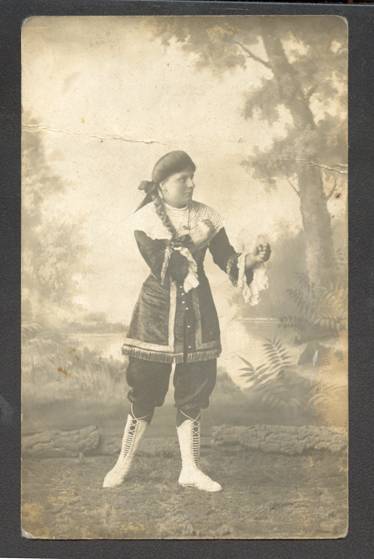
Annie Moore
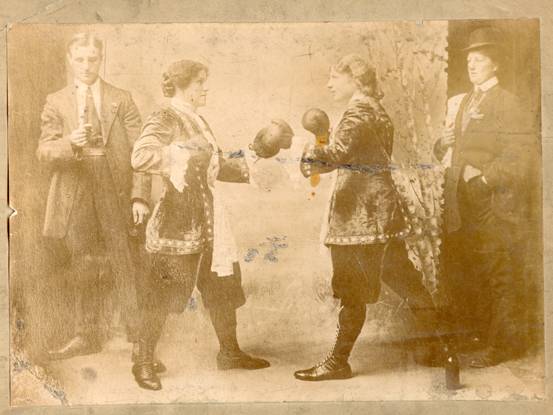
Albert, Sarann (Sarah Ann), Annie and Alice Moore
A major attraction at the booth was the presence of a black boxer, Bobby Dobbs. Dobbs had a fascinating life. As related in Nat Fleischer’s Black Dynamite, the story of the Negro in the prize ring, he was born into slavery in Knoxville, Tennessee in 1858 (actually born 1870 – see note at the end).* His prowess first came to the fore when he defended his master’s two sons from 3 thugs, knocking 2 of them senseless. This led to some boxing lessons in Atlanta. He fought his first fight in Ogden, Utah in 1889, under London Prize Ring rules, which allowed wrestling. The major threat to Dobbs in this frontier town, however, was that of being shot! When Dobbs was obviously getting the better of his opponent, the spectators fired guns and stopped the 2 hour fight. Dobbs, although only a lightweight, continued to beat heavier opponents, often over 30 or 40 rounds, across America. In 1902 he sailed for England and stayed until 1910, spending 3 years with Moore’s boxing show. Although in his thirties he still had a terrific punch that caught out many a young hopeful. After leaving the show he went to the Continent, fighting in Paris, Berlin, and Budapest. An interesting contest took place in 1910. A young hopeful from Chicago named Dick Green arrived in Paris and called in to see the boxing correspondent of the New York Morning Telegraph, who was none other than the famous lawman Bat Masterson. Masterson gave him some introductions and the young Green made good progress. He then wrote to Masterson from Berlin, exulted by the fact that he had been matched with some aged negro called Bobby Dobbs, and telling Masterson he would be embarrassed to take the money from someone the age of his grandfather. Masterson was very amused. When he was in Dodge City, Dobbs had drifted into town and beat every rough cowboy or miner without exception, so Masterson knew he would be no push over whatever his age.
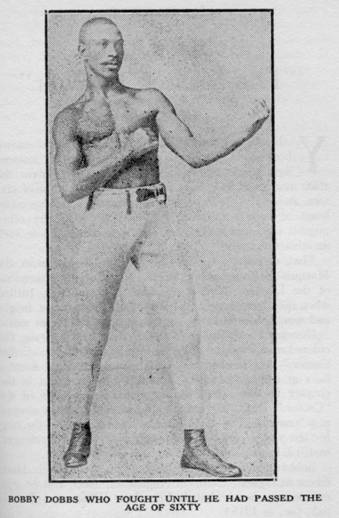
Sure enough, Green was battered senseless, and didn’t come round for 15 minutes! Dobbs then moved on to Budapest, where he ran a boxing school, only returning to America at the outbreak of the war, but having to leave much of his accumulated funds behind in Hungary. He was still boxing, and winning, in 1915.
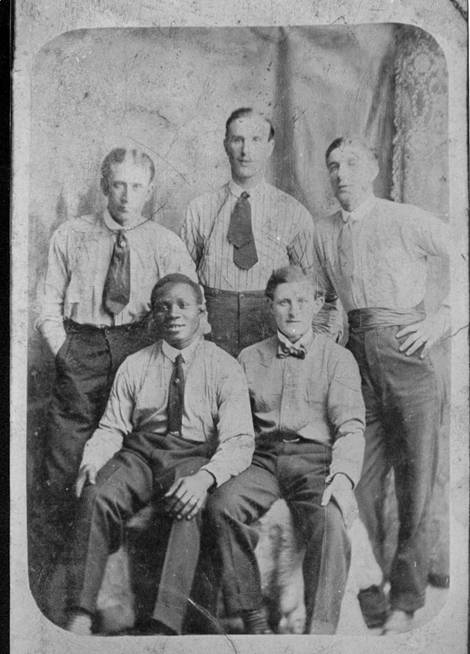
Sam Minto front left, Albert Moore centre rear, others unknown.
After Dobbs left Old Moore’s show, another black boxer, a West Indian called Sam Minto, replaced him. He also went on to a long professional career, stretching from 1910 to 1948. Another attraction of the booth was a brown bear, which all-comers were challenged to spend some time in the ring with! Apparently, the contest would be ended by Old Moore making a clicking sound, at which signal the bear would grab the poor unfortunate. On one occasion the bear escaped and had to be subdued with a bucket of beer before they could recapture it. Bill Moore was obviously someone who kept his finger on the pulse, for 1911 saw him set up at the Torry Skating Rink in Aberdeen, established for the new craze of roller skating.
With the outbreak of the war, and so many young men going off to the front, times became hard for the boxing booth, and although it was set up for a time at Catterick Army Camp to challenge the soldiers there, the ill health of my great-grandfather and the return from the war of Albert suffering from the effects of gas, led to the demise of the booth. Family memories maintain that Albert Moore was never defeated before he went off to war, and the following extract of his career from the World’s Fair newspaper of 1910 would lend some support to this:
‘He met Patsey Haley of Stockton-on-Tees, in a 10 round contest, which ended in a draw; he defeated Spud Murphy, of Newcastle in 5 rounds; he defeated Ginger Pringle in 5 rounds, and again met and knocked him out in 8 rounds; defeated Banfied of Darlington in 4 rounds; defeated Rogers of Darlington in 6 rounds; defeated Melrush of Stockton-on-Tees in 4 rounds; defeated Tom Reid, of the Central Meat Market Glasgow, 8st 4lbs champion of Scotland in 8 rounds; a draw with Bill Fielder of London 8st. 6lbs champion of England, 6 rounds; beat Alf Homewood of London in 6 rounds and again defeating him in 3 rounds; defeated Reddie Thompson at the Wellington Palace Glasgow before 4,000 spectators in 1 ½ rounds; drew with Jack McKinnon, of Govan, 6 rounds; met again and fought 10 rounds, the referee declaring another draw; defeated McCleary of Govan in 5 rounds;
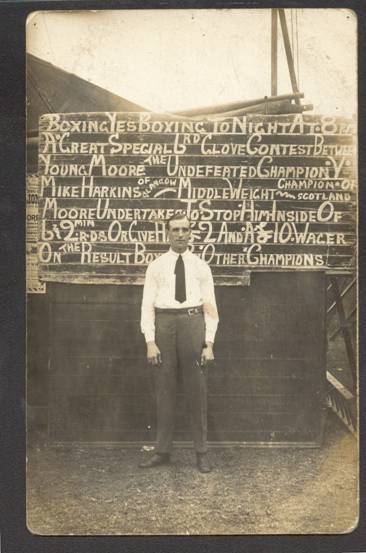
Albert Moore c.1910
defeated Tobbie Wilders at the Empire Theatre, Dublin in 10 rounds; defeated J. Ryan of Belfast in 8 rounds; defeated J. McKenzie of Broxburn in 1½ rounds; defeated Jock McDonald of Greenock, late of the Black Watch, lightweight champion of India, in 1½ rounds; defeated Sandy Brown of Falkirk in 1½ rounds; defeated Jack Livingstone of Kilmarnock in 3 rounds; defeated Jack Dougherty of Kilmarnock in 3 rounds; defeated Tom Ireland of the Northern Sporting Club Aberdeen in 8 rounds; defeated Eddie Beattie of Castle Cary, the 9st 6lbs pit champion in 2 rounds; defeated H. Johnstone of Larbert in 2 rounds; defeated Eddie Donaldson of Leith, middleweight champion of Scotland in 2 rounds; defeated young Robertson, lightweight champion of Scotland in 1 round; defeated Mitchell of the Royal Scots in 2 rounds; defeated Jose McNiff of the Argyll & Sutherland Highlanders in 3 rounds; Johnny Gallagher of Edinburgh ex-amateur champion of Scotland was defeated by young Moore in 2 rounds; P. Gallagher of Hamilton was the undefeated champion of Lanarkshire until he met the enterprising youth, who defeated him in 7 rounds; they met again & Gallagher was defeated in 5 rounds; defeated Alex Munro of Aberdeen in 4 rounds.’
* I am grateful to Bobby J Dobbs for providing evidence that he was in fact born in 1870 in Cartersville, Georgia. He died in 1930.